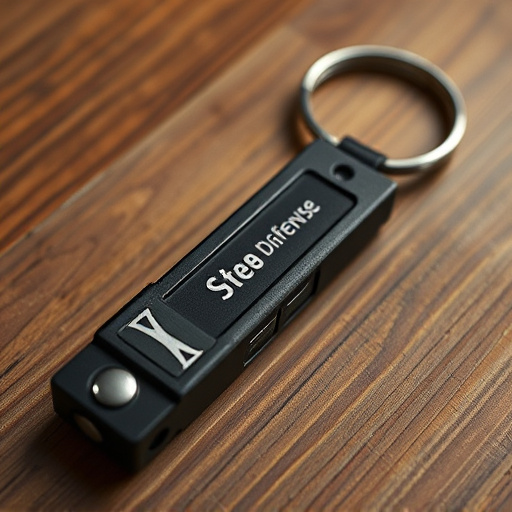When designing a tactical keychain weapon, choosing durable and strong metals like stainless steel or titanium is essential for performance, corrosion resistance, and weight considerations. These materials cater to various tactical applications, offering precision, impact resistance, and ergonomic designs that ensure comfortable control for extended use in diverse scenarios.
In today’s world, tactical keychains have evolved from simple metal rings to multifunctional tools that offer peace of mind and utility. This guide delves into the art of designing a superior metal defense keychain. From selecting robust materials like stainless steel, aluminum, or titanium for durability, to incorporating tactical features like bottle openers and glass breakers while maintaining compactness, we explore key tips. Learn how to balance comfort, control, and size for everyday carry (EDC), making your keychain a versatile weapon of convenience.
- Choosing the Right Metal for Durability and Strength
- – Discussing the importance of metal selection for keychains
- – Comparing popular metals like stainless steel, aluminum, and titanium
- Designing for Comfort and Control
Choosing the Right Metal for Durability and Strength
When designing a tactical keychain weapon, selecting the appropriate metal is paramount for ensuring both durability and strength. Look for metals known for their superior hardness and resistance to wear, such as stainless steel or high-strength alloys like titanium. These materials can withstand frequent use and extreme conditions, making them ideal for creating a robust and reliable keychain grip.
Consider the specific tactical applications when choosing your metal. For instance, if the keychain will be used in combat situations, opt for metals that offer excellent edge retention and impact resistance. Stainless steel, with its corrosion-resistant properties, is a popular choice among those who prioritize durability and low maintenance. Alternatively, titanium alloys provide exceptional strength-to-weight ratios, making them suitable for lightweight tactical gear while maintaining superior strength.
– Discussing the importance of metal selection for keychains
When crafting a tactical keychain, choosing the right metal is paramount. The metal selection directly impacts the overall performance and durability of your keychain weapon techniques. For instance, high-quality stainless steel offers excellent resistance to rust and corrosion, making it ideal for everyday carry and outdoor adventures. Its strength and versatility allow for precise craftsmanship, ensuring the keychain maintains its edge and structure over time.
On the other hand, titanium alloys are prized for their exceptional strength-to-weight ratio, making them perfect for those seeking a more robust yet lightweight solution. These metals are particularly crucial when designing functional keychains meant for self-defense or outdoor survival scenarios, where reliability and performance under stress are paramount. The right metal choice not only enhances the keychain’s functionality but also adds to its overall aesthetic appeal.
– Comparing popular metals like stainless steel, aluminum, and titanium
When it comes to tactical keychain weapon techniques, choosing the right metal is a crucial step in designing your grip. Popular options include stainless steel, aluminum, and titanium—each with its unique advantages and considerations. Stainless steel, known for its durability and corrosion resistance, offers excellent strength and longevity, making it a top choice for heavy-duty applications. It’s versatile and can be easily engraved, adding a personal touch to tactical gear.
Aluminum, lighter in weight compared to stainless steel, provides a balance between strength and portability. This metal is highly resistant to corrosion, ensuring that your keychain remains reliable over time. Titanium, on the other hand, stands out for its exceptional strength-to-weight ratio, making it ideal for those seeking a robust yet lightweight solution. It’s also hypoallergenic, which can be beneficial for users with sensitive skin. Each metal has its place in tactical keychain designs, catering to various preferences and use cases.
Designing for Comfort and Control
When crafting a tactical keychain grip, comfort and control should be paramount. The design should accommodate various hand sizes and shapes, ensuring a secure and comfortable hold for extended use. Incorporate ergonomic features like textured grips or contoured surfaces to prevent slipping and provide a steady, confident grasp. This is especially crucial when employing metal defense keychain techniques, where precision and stability are key.
Consider the balance and weight distribution of the keychain as well. A balanced design reduces strain on the hand and wrist during intense situations. Incorporate tactical features like adjustable straps or multiple grip points to cater to different user preferences and enhance control. By focusing on these aspects, you’ll create a versatile tool that combines functionality with comfort, making it a valuable asset for those relying on tactical keychain weapon techniques.
When crafting a tactical keychain weapon, attention to both material choice and design is paramount. Opting for durable metals like stainless steel, aluminum, or titanium ensures your keychain grips tightly and withstands everyday wear and tear. Balancing strength with comfort is key; a well-designed grip allows for secure control, making it an essential accessory for those who demand the best in functionality. Incorporating these metal defense keychain grip design tips will help you create a tactical tool that combines reliability and user-friendliness.
